2013 Millrose GamesFeb 15, 2013 by Mitch Kastoff
The Anomaly of Bernard Lagat
The Anomaly of Bernard Lagat
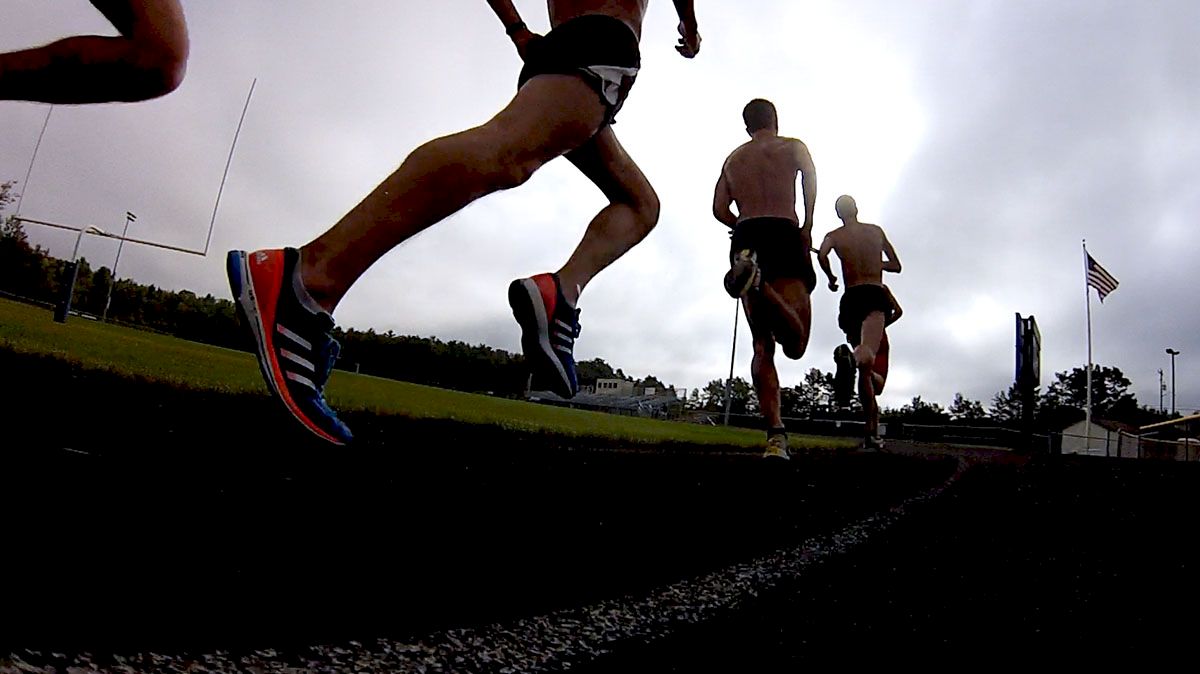
It’s hard to explain Bernard Lagat. Behind his charming smile lies something that time nor science can justify. His personality may be alluring, but in the final 200m of a race, his kick is anything but charming. Decisive in his tactics, confident in his kick, Lagat is an outlier.
Kip’s ability simply lie outside the range of statistical probability. Who else was able to perform as such a high level at around age 38?
For starters, there’s Paula Radcliffe (39), Denna Kastor (40), and Haile Gebreselassie (39). All three are legends in their own time, to varying degrees of course.
Even still, Lagat is of a different class. In their later years, Radcliffe and Kastor have been competitive, but nowhere near their once dominant shape.
Gebreselassie, on the other hand, is similar to Lagat in the competitive sense. However, the glaring difference is aerobic capacity versus raw speed.
In recent years, Geb has still been in the hunt in major races. In 2008, he set the marathon world marathon with a win 2:03:59 in Berlin. Last year, he ran 2:08:17 at Tokyo, won the Vienna Half (and beat Radcliffe in a handicapped race), and crushed an impressive field at the Manchester Run.
In recent years, Geb has still been in the hunt in major races. In 2008, he set the marathon world marathon with a win 2:03:59 in Berlin. Last year, he ran 2:08:17 at Tokyo, won the Vienna Half (and beat Radcliffe in a handicapped race), and crushed an impressive field at the Manchester Run.
The difference between “The Emperor” (Gebreselassie) and the President of the Boards” (Lagat) isn’t their level of competitiveness, but their event.
The passage of time takes a physical toll on the body. When an older athlete is no longer able to compete at speedy events, he or she moves up in distance. It’s very rare to see an older sprinter, such as Kim Collins, compete with the best. Heck, there’s even this woman (she even wears the Nike Mayfly... so cool).
Older athletes in the marathon makes sense, but the 3000m? There should be physical laws that regulate this sort of speed versus endurance tradeoff. We call it, "growing old."
Older athletes in the marathon makes sense, but the 3000m? There should be physical laws that regulate this sort of speed versus endurance tradeoff. We call it, "growing old."
He may have lost some of his 3:26.34 1500m speed, but Lagat’s tradeoff is almost nonexistent. Kip is an outlier or rather, a darn fine wine.
If we take a look at Kip’s indoor campaign through the years, you’ll notice a consistent trend. While he can attribute his success to staying injury free and regularly taking days off, it’s still startling to glance at his yearly progression.
Since he’s running the two-mile this Saturday, we’ll analyze the next closest and more often run 3000m. Below are Lagat’s 3k personal bests each year since 1997.
Via tilastopaja.org
| 1997 8:05.43 OTi | 1 | Vandal | Moscow ID | 14 Feb | ||
| 1998 7:46.45i | 2 | NCAA | Indianapolis IN | 14 Mar | ||
| 1999 7:54.92i | 1 | NCAA | Indianapolis IN | 6 Mar | ||
| 2000 8:09.92 OTi | 1 | McDonald's | Moscow ID | 5 Feb | ||
| 2001 7:45.52i | 6 | WC | Lisboa | 11 Mar | ||
| 2004 7:34.96i | 1 | Athina 2004 | Athína | 22 Feb | ||
| 2007 7:32.43i AR | 1 | Norw Union | Birmingham | 17 Feb | ||
| 2008 7:34.65i | 1 | GE Galan | Stockholm | 21 Feb | ||
| 2009 7:35.41i | 1 | Sparkassen | Stuttgart | 7 Feb | ||
| 2010 7:37.97i | 1 | WC | Doha | 14 Mar | ||
| 2011 7:39.35+i | 1 | New York NY | 12 Feb | |||
| 2012 7:41.44i | 1 | WC | Istanbul | 11 Mar | ||
| 2013 7:34.71i | 1 | IHM | Karlsruhe | 2 Feb |
Since his move up to the distance in 2007, Kip has broke 7:40 for 3000m every year. His 7:34.71 win in Karlsruhe a few weeks ago is the second-fastest time of the year other than his American record (2007) and his win in Stockholm (2008).
The big question is whether Lagat can retake the just-over-one-year-old American two-mile record of 8:09.72 set by Galen Rupp.
If either Kip’s run in Karlsruhe (it converts to roughly 8:10.95) or him simply stating that he’s ready to take back the record doesn’t convince you that he’s on the verge, let the statistics speak for themselves.
Actually, no. Let’s instead play a game: Below are Lagat’s personal bests from the year leading up to his then American two-mile record of 8:10.07 from ’11 and his personal bests leading into Saturday’s race.
| 1500 m | ||||||
| 3:42.0h+i | 1 | Millrose | New York NY | 29 Jan | ||
| 3:35.49i | 4 | Aviva | Birmingham | 20 Feb | ||
| 3:34.36 | 5 | adidas | New York NY | 12 Jun | ||
| 3:36.89 | 1 | el Hassan | Tanger | 18 Jul | ||
| 3:32.51 | 7 | Herc | Monaco | 22 Ju | ||
|
||||||||||||||||||||||||||||||||||||||||||||||||||||||||||||||||||||||||||||||||||||||||||||||||||||
|
||||||||||||||||||||||||||||||||||||||||||||||||||||||||||||||||||||||||||||||||||||||||||||||||||||
If you knew the year by some of the specific times, then just remain ignorant for a moment and play along (Answer: The second group is from 2012).
There isn’t much that separates the two buildups. Then, what does this mean?
1) He’s ready to roll
2) He’s an anomaly
"It's mind-boggling to think he's 38 and still running like this," coach James Li told the Wall Street Journal. "We have never seen it in the world anywhere at any time in history."
Although Lagat is living history, he’s about to break history. When the Armory house lights are turned down and the lone spotlight shines on this Millrose legend, what will he run for those two miles?
Prediction: 8:07.40
Related Content
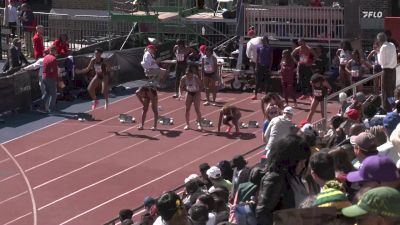 Women's 100m Event 351, Prelims 2
Women's 100m Event 351, Prelims 2Apr 26, 2024
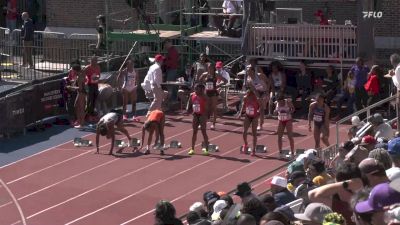 Women's 100m Event 351, Prelims 1
Women's 100m Event 351, Prelims 1Apr 26, 2024
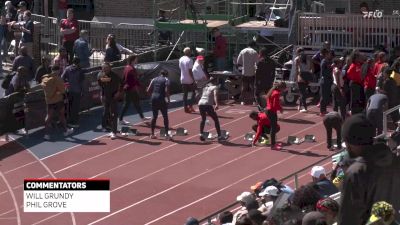 Women's 100m Hurdles Event 352, Prelims 2
Women's 100m Hurdles Event 352, Prelims 2Apr 26, 2024
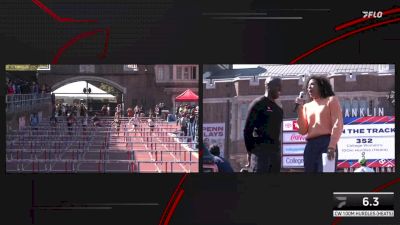 Women's 100m Hurdles Event 352, Prelims 1
Women's 100m Hurdles Event 352, Prelims 1Apr 26, 2024
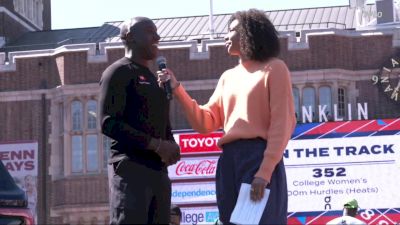 Women's 100m Hurdles Event 352, Prelims 1
Women's 100m Hurdles Event 352, Prelims 1Apr 26, 2024
 Penn Relays 2024 Results On Day 2: See Which NCAA Stars Won
Penn Relays 2024 Results On Day 2: See Which NCAA Stars WonApr 26, 2024
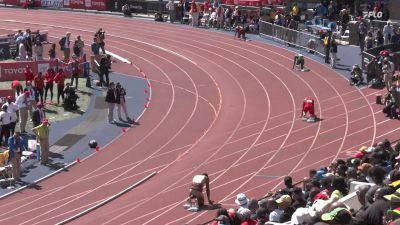 Men's 4x200m Relay Coa, Event 350, Finals 4
Men's 4x200m Relay Coa, Event 350, Finals 4Apr 26, 2024
 Men's 4x200m Relay Coa, Event 350, Finals 3
Men's 4x200m Relay Coa, Event 350, Finals 3Apr 26, 2024
 Men's 4x200m Relay Coa, Event 350, Finals 2
Men's 4x200m Relay Coa, Event 350, Finals 2Apr 26, 2024